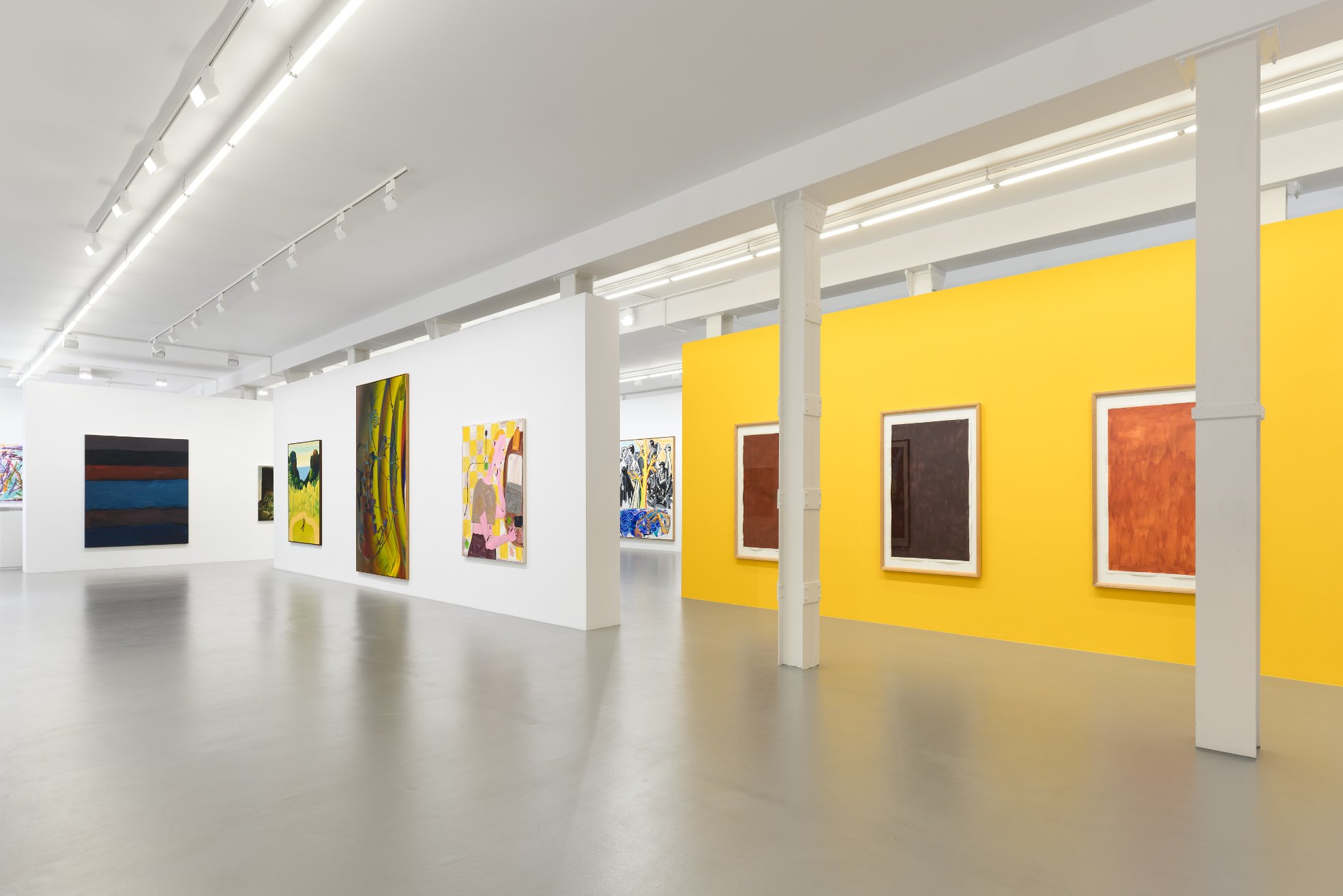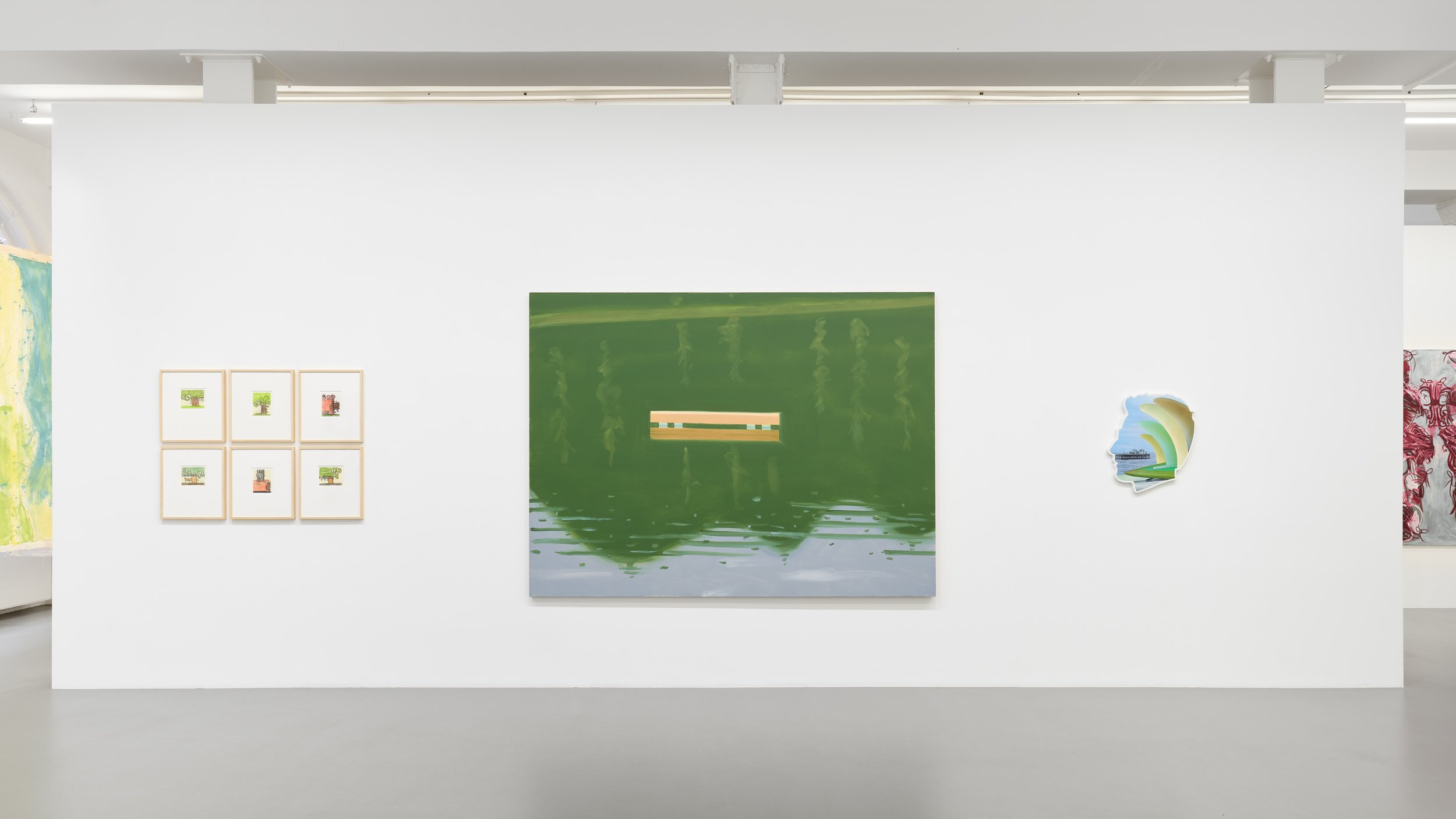Art Basel Paris 2024 at the Grand Palais. Courtesy of Art Basel
text by Sammy Loren
Beneath the majestic light shining through the glass roof of the Grand Palais, Art Basel Paris could almost be mistaken for a religious gathering. Nearly 200 galleries and more than 65,000 congregants made the pilgrimage to the 8th arrondissement for one of the art world's most important fairs. A celebration of art and wealth, prestige and power, the Paris iteration of Art Basel isn’t the most thrilling (Miami), nor the biggest (Basel), yet it has an unmistakable allure and a more humane scale.
It’s the fair’s first year at the Grand Palais, a glorious Beaux-Arts exhibition hall. The palace features ornate steel railings and soaring plate glass ceilings, which flood the space in a luminous light. When it opened for the 1900 Universal Exposition, the Grand Palais served as the site for France—then at its cultural and political zenith—to peacock its prowess for all the world to see. Over a hundred years later, France finds itself much diminished: Paris no longer the capital of the world, French abandoned as the lingua franca. Hosting an art fair as illustrious as Art Basel inside the Grand Palais therefore felt charged with meaning, at least for me. The French government had just completed a major restoration on the building and I couldn’t help but hear them, as well as the elite art world saying, Don’t count us out yet!
Walking through the maze of lanes, I was drawn into My House by American artist Tschabalala Self at Eva Presenhuber. Self remodeled the entire booth into a sort of home, the white cube’s floors and walls painted in vivid blue and lined with gold and ivory accents. The space could be a richly wallpapered bedroom—or a cage surrounded by the sky. This transformation creates an unsettling “home” for the artist’s colorful, darkly complex paintings and sculptures. My House references historic figures such as Sarah Baartman and Josephine Baker. In the early 19th century, Baartman was trafficked to France from present day South Africa whereas Baker fled the segregationist era United States for Paris. In France, Baartman faced trauma while Baker found a sense of freedom. My House suggests that a similar dynamic endures for many today, in France and beyond.
Installation view, Txchabalala Self, My House, Galerie Eva Presenhuber, Art Basel Paris, 2024
Around the corner I found pieces by Tursic & Mille, a French artistic team made up of Ida Tursic and Wilfried Mille. Their works at Galleria Alfonso Artiaco showcase the duo applying oil paints onto engravings, giving the work a textured, collage-like effect. Tursic & Mille’s paintings blend the abstract with the figurative, the mundane with the mythic. In one a woman seemingly cut from the pages of a fashion magazine flashes her eyes at the viewer, her wave of blond hair swelling into yellow paint that crests and breaks over the entire painting. In another beside it, pink flowers sprout against an inky sky with clouds of paint hanging low and ominous. Tursic & Mille create an interior frame within the paintings and colors bleed all over as if to comment on the very origin of images in a world saturated by them.
Upstairs with the emerging and medium-sized galleries ringing above the main floor, LambdaLambdaLambda, the only gallery ever from Kosovo, showed pastels by Nora Turato. The Zagreb-born, Amsterdam-based artist’s highlight was the Freudian triptych, anyone has some mom? with the text “Where’s my mom?” drawn across the three panels. The word ‘mom’ is an alarming shade of red and stands alone on its own white panel. The piece reflects on everyone’s sense of neediness, dependency, and infantile desire for emotional security. It seemed to echo everyone’s wish for simpler times when the burden of our decisions—and their subsequent fallout—fell on someone else’s shoulders.
Nora Turato
anyone has some mom?, 2024
Oil pastel on paper and Dibond, framed
installation size: 220 × 254,5 × 5,2 cm
I get Turato’s point. Regression seems more and more en vogue. While in Paris, gallerists lamented the market’s softness, a few whispering to me how they suspected collectors were waiting for Trump to win before throwing money around again. For the past couple years gallerists unloaded a lot of works by buzzy young artists, a speculative boom that has since largely gone bust. In response, programs showed not just established names, but also more historic ones: de Chirico, Kandinsky, Dalí, Giacometti.
One striking example of this swing was LA’s Hannah Hoffman Gallery who along with New York’s Candice Madey jointly exhibited works by Darrel Ellis. The suite of photographs, portraits and paintings, though produced in 1980s New York, seem more in conversation with the European Modernists and present a singular vision. Ellis’s father came of age during the Harlem Renaissance and photographed the optimistic spirit of booming, post WWII New York City. After he died, his son inherited his archive. The younger Ellis mined that trove of images to inspire his work. Yet Darrel Ellis lived in a different New York City than his father. By the 1970s, New York City faced financial ruin, Vietnam unmasked the American Empire and the Civil Rights era ended in the assassinations of MLK Jr. and Malcolm X. Ellis’ eerie, disjointed works reflect that darker, more critical strain of American art. Whereas many of his downtown NYC contemporaries retreated into minimalism, Ellis developed a visual language that feels poetic and sharp, poignant and unsentimental. The works often portray intimate and domestic scenes, and show how time and memory shape our reality.
And what is our reality? That's the central question. How some of us wander around snapping up paintings and others figure out what to say about them. Over the weekend the wider world—the one absent from the fair, the one spiraling towards the abyss—felt muted and distant. I encountered optimism, enchantment and a healthy dose of nihilism at Art Basel Paris and like the many thousands of beguiling art works I saw, the fair itself resists providing any tidy answers, which is both its great challenge and even greater charm.
Art Basel Paris 2024 at the Grand Palais. Courtesy of Art Basel








